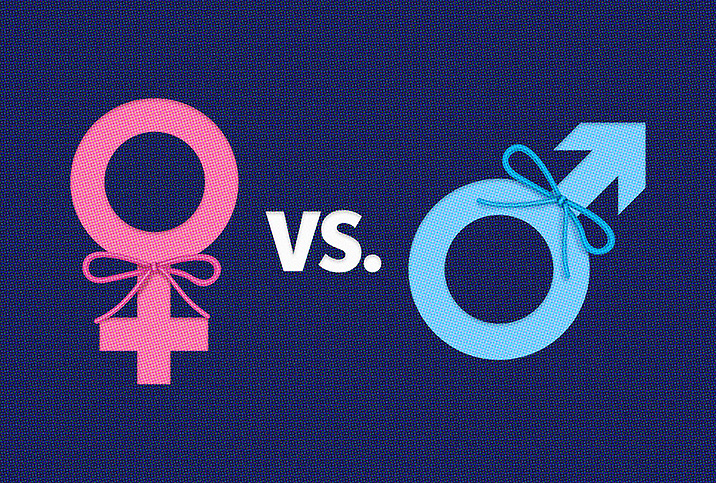Please Stop Believing These Tubal Ligation Inaccuracies

About 50 million men in the United States have had a vasectomy. That's the surgical procedure that closes off the vasa deferentia, the ducts that transport sperm to the urethra for expulsion with semen, effectively stopping any chances of conception.
While most men are familiar with the common surgery—many have considered it or had it done—you might be less familiar with tubal ligation, which is the female equivalent.
An estimated 700,000 women opt for tubal ligation every year in the United States, so understanding the specifics of the surgery is important.
Maybe you think tubal ligation is the same as vasectomy, or that it's easy for anyone who wants it to get permanent birth control, but there are a lot of misconceptions out there surrounding the procedure.
We talked to the experts to find out the details on tubal ligation and vasectomy so you can stop falling for these common inaccuracies.
Inaccuracy #1
Tubal ligation surgery is similar to a vasectomy
A vasectomy is a pretty straightforward surgery used to prevent pregnancy. A surgeon makes a small incision in the man's scrotum, cuts the vasa deferentia—those previously mentioned sperm-carrying ducts—and then cauterizes the ends so no more sperm can get through.
"A vasectomy is an outpatient procedure that can be performed under local anesthesia. The risk for potential complications from a vasectomy is much lower than a tubal ligation, and a vasectomy is typically reversible," said Thais Aliabadi, M.D., a board-certified OB-GYN and founder of Trimly, an online medical weight-loss program in Beverly Hills, California.
Tubal ligation, on the other hand, isn't necessarily a major surgery, but it is abdominal surgery.
"Tubal ligation is typically performed laparoscopically through a small incision in the abdomen, which makes it more invasive than a vasectomy," said Nicole Larrea, M.D., an OB-GYN at Denver Health.
The procedure starts with two or three small incisions in the abdomen, Aliabadi explained.
"The abdomen is then inflated with carbon dioxide gas to allow the surgeon to inspect the inside of the abdomen/pelvis and identify the fallopian tubes and surrounding structures," she said. "Once identified, the surgeon either cuts, clamps or ties the tubes to achieve permanent blockage or closure."
While tubal ligation is a more invasive procedure than a vasectomy, the recovery period for both surgeries is similar. Both procedures can lead to soreness, swelling and bruising, but patients generally heal in a couple of weeks.
The most significant difference between the two procedures is that tubal ligation is an immediately effective form of birth control.
"After a vasectomy, partners must use backup contraception until azoospermia [lack of sperm in ejaculate] is confirmed, typically three to six months post-procedure," Aliabadi said.
Inaccuracy #2
It's simple for women to get their tubes tied
In most situations, men can decide they want a vasectomy, talk it over with their doctor, sign the forms and, voilà, they can get "the snip."
In some cases, it's simple for women to get a tubal ligation as well. But not every time.
Some women struggle to find a doctor who will approve tubal ligation. In 18 states, physicians can legally refuse to provide sterilization, according to the Guttmacher Institute, a national research and policy organization. Women can be denied the procedure because they're too young, childless or not married, among other reasons.
Insurance can also be a barrier. Women on Medicaid have to wait at least 30 days between electing to have their tubes tied and actually getting the procedure. These restrictions do not apply to men opting for a vasectomy.
Even if women find a doctor who will perform the surgery, it's not an immediate process.
"Women must undergo detailed counseling prior to the procedure regarding the surgical technique, efficacy, safety, potential complications and potential for regret," Aliabadi said.
That's not to say all men can get the surgery immediately, either. Most men need to have at least one preliminary appointment with their doctor before scheduling the procedure.
Inaccuracy #3
The cost of tubal ligation and vasectomy are similar
Getting a vasectomy can cost anywhere from $0 (with certain insurance plans or Medicaid) to $1,000. The cost of tubal ligation is about six times more than a vasectomy, costing up to $6,000, according to Planned Parenthood.
The difference in cost comes down to the complexity of the two surgeries. Since tubal ligations are more invasive than vasectomies, they are more expensive, Larrea explained.
Tubal ligations require general anesthesia and are performed in an operating room setting, Aliabadi added.
Fortunately, it's possible for both vasectomies and tubal ligations to be low cost. Most insurance plans cover some form of sterilization, and Medicaid covers it entirely.
Inaccuracy #4
Tubal ligation reversal is the same as vasectomy reversal
Both vasectomies and tubal ligations are reversible to a degree. That degree, though, is appreciably different. Vasectomy reversals are 90 percent to 95 percent effective, according to Stanford Health Care.
Tubal ligation reversals have a significantly lower effectiveness rate: between 50 percent and 80 percent. The procedure is generally straightforward. The surgeon makes an incision to access the fallopian tubes and reconnect the separated segments. In some cases, however, the tubes aren't long enough to be successfully reconnected.
Tubal ligation reversal also presents a low risk of ectopic pregnancy, when a fertilized egg implants in the fallopian tubes instead of the uterus. An ectopic pregnancy can be life-threatening.
So now you know the facts. If you or your partner are thinking about permanent birth control, talk to your doctor. They can discuss all of your options and ensure you're not falling for any more tubal ligation inaccuracies.


















